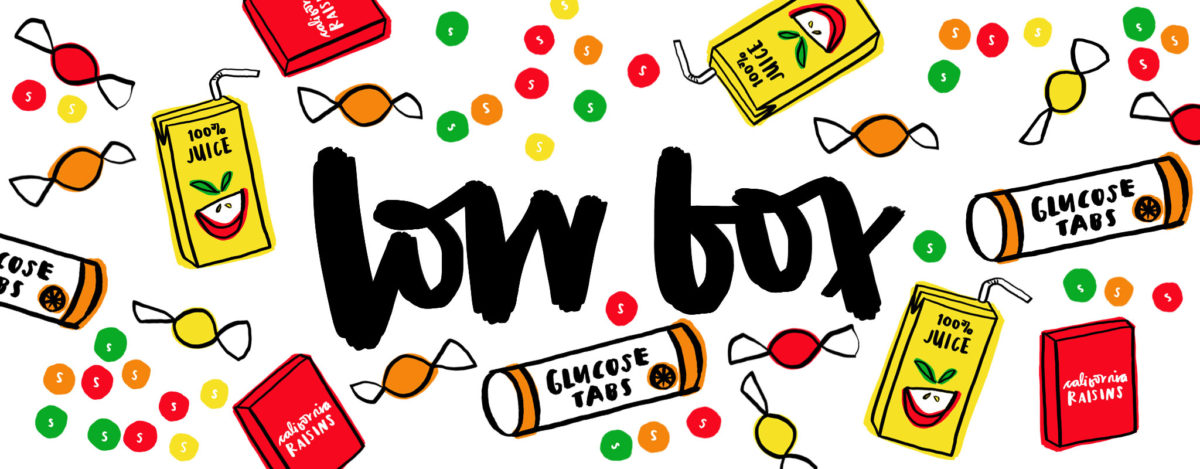Low Box for College/University
Editor’s Note: For more information on managing type 1 diabetes in college, sign up for Beyond Type 1: College Edition, our email series on all things college + type 1 diabetes (T1D).
Hypoglycemia is the state of low blood sugar and is caused by too much insulin or too little sugar in the body. It is defined as a blood sugar below 3.9 millimoles per liter (mmol/L)70 mg/dL. Untreated, it may result in seizures, unconsciousness and sometimes death. Know the symptoms of hypoglycemia and how to treat it. Also, teach others so that they can help you if you need it. Make sure to always have low snacks on you and a low box in a central location that you frequent.
What are symptoms of hypoglycemia?
- anxious feeling
- behavior change similar to being drunk
- blurred vision
- cold sweats
- confusion
- cool pale skin
- difficulty in concentrating
- drowsiness
- excessive hunger
- fast heartbeat
- headache
- nausea
- nervousness
- nightmares
- restless sleep
- shakiness
- slurred speech
- unusual tiredness or weakness
Treatment
- Consume 15 grams of carbohydrates.
- Wait 15 minutes.
- Check blood sugar level again.
- If blood sugar isn’t rising, consume 15 grams more until blood sugar levels do rise.
A low box should be located in anywhere you frequent such as your apartment or dorm room. You should always bring low snacks with you if you need sugar on the go.
Low snack ideas
- Juice boxes (at least 15 grams of carbs each)
- Regular soda
- Glucose tablets
- Snacks like granola bars or crackers
- Skittles, Starbursts, Jelly Beans, Smarties, Pixie Sticks, Airheads
- Raw sugar
Other inclusions in your low box should be
- Extra vial of test strips and batteries for meters and pumps as needed
- Emergency nasal or auto-injectable glucagon kits as needed
Download the continuous glucose monitor (CGM) action chart HERE and Read The 6 Nutrition Bars that Will Change Your Life by Alexi Melvin.





